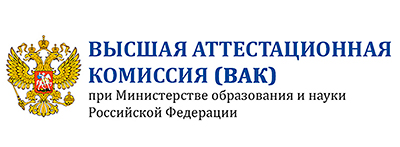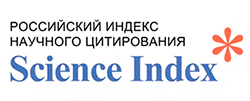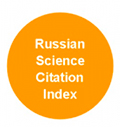Spatial patterns of age-specific sex ratios in Russian intraregional migration
Abstract
Migration is one of the key processes that shape the age and sex structure of a population. Intraregional migration, which accounted for 39% of migration turnover in Russia in 2016-2020 and follows the centripetal trend, has a significant impact on the population of many territories. The study of sex disparities in migration deepens the understanding of its impact on the age-sex population structure, fertility and marriage patterns, and local labor markets. This article aims to identify the differences in the participation in intraregional migration between men and women, using data on the age-sex population distribution and the number of arrivals and departures by age and sex in 2016-2021 in Russian municipalities. Based on these primary data, the coefficients of arrivals and departures per 1000 residents for individual age and sex groups for 2016-2020 were calculated. Also, the corresponding standardized coefficients were calculated for the ages of 15-29 and 40+ years. The case of Central Russia was considered in detail.
The results revealed that women show higher migration activity at the age of up to 40 years, while men do so at the age of over 40 years and in all types of territories. The higher migration activity of women at young ages is associated with their greater involvement in educational migration and fewer employment opportunities in peripheral territories, as well as with a potentially more frequent change of registration when getting married, having children and enrolling them in preschool institutions and schools. As for men, their higher migration activity at older ages is probably due to the fact that they less often than women take care of children alone after a divorce or of elderly relatives, which makes them less restrained in terms of migration.
Downloads
References
Алексеев А.И., Воробьев М.И. (2018). Сколько сельских жителей в России зимой? Вестник Московского университета. Серия 5. География, (5), 104-107. https://vestnik5.geogr.msu.ru/jour/article/view/465/427
Бессуднов А.Р., Малик В.М. (2016). Социально-экономическое и гендерное неравенство при выборе образовательной траектории после окончания 9 го класса средней школы. Вопросы образования, (1), 135-167. https://doi.org/10.17323/1814-9545-2016-1-135-167
Герасимов А.А. (2022). Территориальная и возрастная дифференциация соотношения полов населения России. Вестник Московского Университета. Серия 5. География, (4), в печати.
Зайончковская Ж.А. (1991). Демографическая ситуация и расселение. М.: Наука. http://www.demoscope.ru/weekly/knigi/IDEM_library/pdf/book024.pdf
Казенин К.И. (2014). Миграция дагестанцев внутри региона: некоторые демографические загадки. Этнокультурные ландшафты на постсоветском пространстве: проблемы и особенности формирования дагестанского компонента (к 90-летию ИИАЭ ДНЦ РАН). Махачкала: ИИАЭ ДНЦ РАН, 2014, 30-40. https://cyberleninka.ru/article/n/rets-na-kn-etnokulturnye-landshafty-na-postsovetskom-prostranstve-problemy-i-osobennosti-formirovaniya-dagestanskogo-komponenta-k-90
Карачурина Л.Б., Мкртчян Н.В. (2013). Изменение численности населения административных районов и городов России (1989–2010 гг.): центро-периферийные соотношения. Вопросы географии, 135, 82-107. https://www.elibrary.ru/item.asp?id=25819767
Карачурина Л.Б., Мкртчян Н.В. (2016). Роль миграции в усилении контрастов расселения на муниципальном уровне в России. Известия Российской академии наук. Серия географическая, 5, 46-59. https://doi.org/10.15356/0373-2444-2016-5-46-59
Карачурина Л.Б., Мкртчян Н.В., Петросян А.Н. (2021). Пространственные особенности миграционного прироста пригородов региональных столиц России. Вестник Московского университета. Серия 5. География, 6, 123-134. https://publications.hse.ru/pubs/share/direct/547019848.pdf
Кашницкий И.C. (2014). Что в возрасте тебе моем? Демоскоп Weekly, 581-582, 1-21. http://www.demoscope.ru/weekly/2014/0581/demoscope581.pdf
Леонидова Г.В., Вячеславов В.Н. (2016). Гендерные особенности внутрирегиональной миграции. Вопросы территориального развития, 2 (32), 1-12. http://vtr.vscc.ac.ru/article/1822/full
Мкртчян Н.В. (2017). Миграция молодежи из малых городов России. Мониторинг общественного мнения: Экономические и социальные перемены, 137(1), 225-242. https://doi.org/10.14515/monitoring.2017.1.15
Мкртчян Н.В. (2019). Миграция на Северном Кавказе сквозь призму несовершенной статистики. Журнал исследований социальной политики, 17(1), 7-22. https://doi.org/10.17323/727-0634-2019-17-1-7-22
Мкртчян Н.В. (2020). Проблемы в статистике внутрироссийской миграции, порожденные изменением методики учета в 2011 г. Демографическое обозрение, 7(1), 83-99. https://doi.org/10.17323/demreview.v7i1.10821
Мкртчян Н.В. (2021). Половые диспропорции в потоках долговременной миграции в России. Демографическое обозрение, 8(3), 6-19. https://doi.org/10.17323/demreview.v8i3.13264
Мкртчян Н.В., Флоринская Ю.Ф. (2019). Жители малых и средних городов России: трудовая миграция как альтернатива безвозвратному отъезду. Журнал Новой экономической ассоциации, 3(43), 78-94. https://doi.org/10.31737/2221-2264-2019-43-3-4
Нефедова Т.Г. (2009). Поляризация пространства России: ареалы роста и «черные дыры». Экономическая наука современной России, 44(1), 62-77. https://www.elibrary.ru/item.asp?id=12109800
Нефедова Т.Г., Трейвиш А.И. (2002). Теория" дифференциальной урбанизации" и иерархия городов в России на рубеже XXI века. Проблемы урбанизации на рубеже веков. Смоленск: Ойкумена, 71-86. http://www.demoscope.ru/weekly/2005/0217/analit01.php
Пьянкова А.И. (2014). Методические проблемы сопоставимости данных переписей населения 2002 и 2010 годов (на примере Московской области). Региональные исследования, (1), 109-121. https://www.elibrary.ru/item.asp?id=21402137
Райсих А.Э. (2019) 434 экономических района, 29 миллионных агломераций и другое. https://reissig.livejournal.com/11959.html
Росстат (2021). Миграционный прирост населения по полу, возрасту и потокам передвижения. https://showdata.gks.ru/report/278004/
Росстат (2022a). База данных показателей муниципальных образований. https://www.gks.ru/dbscripts/munst/
Росстат (2022b). Демографический ежегодник России 2021. https://gks.ru/bgd/regl/B21_16/Main.htm
Фомкина А.А. (2017). Расхождения в оценках численности сельского населения (на примере Тверской области). Вестник Московского университета. Серия 5. География, (6), 88-91. https://vestnik5.geogr.msu.ru/jour/article/view/371/354
Clark W.A.V. (2013). Life course events and residential change: Unpacking age effects on the probability of moving. Journal of Population Research, 30(4), 319-334. https://doi.org/10.1007/s12546-013-9116-y
Faggian, A., McCann P., Sheppard S. (2007). Some evidence that women are more mobile than men: Gender differences in UK graduate migration behavior. Journal of Regional Science, 47(3), 517-539. https://onlinelibrary.wiley.com/doi/abs/10.1111/j.1467-9787.2007.00518.x
Johansson M. (2016). Young women and rural exodus–Swedish experiences. Journal of Rural Studies, 43, 291-300. https://www.sciencedirect.com/science/article/abs/pii/S0743016715000455
Karpestam P., Håkansson P.G. (2021). Rural boys, urban girls? The mystery of the diminishing urban-rural gender gap in Sweden. Journal of Rural Studies, 86, 282-297. https://www.sciencedirect.com/science/article/pii/S0743016721001479
Leibert T. (2016). She leaves, he stays? Sex-selective migration in rural East Germany. Journal of Rural Studies, 43, 267-279. http://dx.doi.org/10.1016/j.jrurstud.2015.06.004
Ravenstein E.G. (1885). The laws of migration. Journal of the statistical society of London, 48(2), 167-235. https://www.jstor.org/stable/pdf/2979181.pdf?casa_token=N6kqrqUzLL0AAAAA:hvQW5-bzPOnJQQBkFDpFoxPrJGUMvDzRgOzp7VMtq31uA6_Ez9irvRj8GgRLwxhfKC5QI3B1z1sLdTjEcfaxpD7ab2-oJWbSYGtgmX_w1_toPt0lNM2g
Zubarevich, N. (2013). Four Russias: Human potential and social differentiation of Russian regions and cities. Russia 2025, London: Palgrave Macmillan, 67-85. https://doi.org/10.1057/9781137336910_4
























